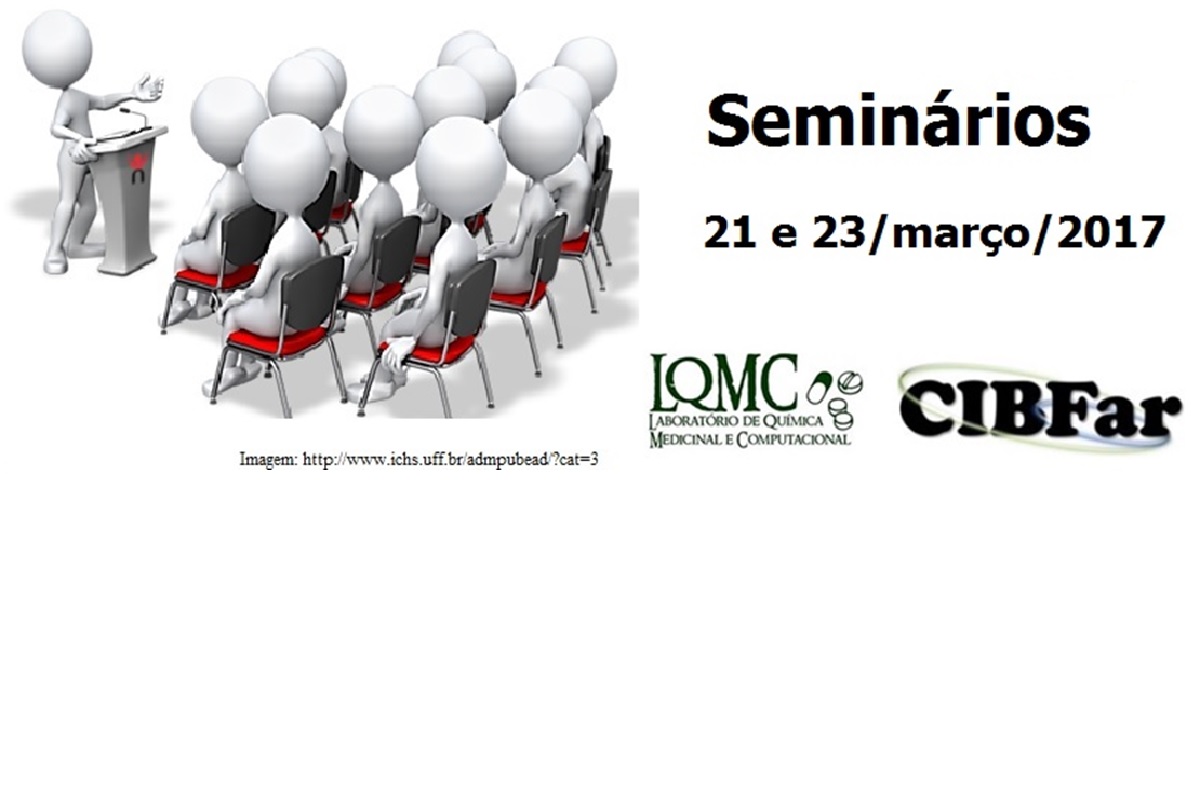Debates e discussões sobre temas relevantes e atuais nas áreas de Química Medicinal, Biodiversidade e Planejamento de Fármacos
Uma iniciativa do Laboratório de Química Medicinal e Computacional (LQMC) e do Centro de Pesquisa e Inovação em Biodiversidade e Fármacos (CIBFar-Cepid/FAPESP), do Instituto de Física de São Carlos da USP
21/03/2017
Instituto de Física de São Carlos
IFSC-USP- Campus 2 – Sala 213
(Sala de Reuniões do CIBFar) – 14:00 h
Profa Agnieszka K. Bronowska
School of Chemistry
Newcastle University, UK
Computational identification of novel binding sites to expand druggable human proteome
The druggable human proteome may be larger than previously estimated: structured proteins may have multiple binding sites (allosteric and/or cryptic) which are not targeted during the conventional structure-based drug discovery procedures. Metamorphic aka intrinsically disordered proteins may also display transient structured binding sites, which may render those challenging targets druggable. Understanding and accurately predicting those binding sites could significantly expand the set of drug targets. I will present the recent all-atom MD simulation data on druggability of proteins containing PAS domains, including PAS domains previously unreported (NCOA1-NCOA3 nuclear receptor coactivators). I will show the novel binding sites we have identified for human STAT3, suitable for targeting by small molecule inhibitors. I will also talk about methods used for reliable identification of novel cryptic and transient protein binding sites: solvent mapping, mixed-solvent atomistic MD simulations (MixMD), and a new approach employing enhanced-pressure molecular dynamics (EPMD) simulations, developed in my group of Vienna, Austria.
Dr. Agnieszka K. Bronowska has been appointed Lecturer in Computational Medicinal Chemistry at Newcastle University in January 2016, and more recently she has become a new MSc Drug Chemistry Degree Programme Director at the School of Chemistry. Before her appointment in Newcastle she was a BIOMS Research Fellow at the University of Heidelberg, Germany, and before that she worked as a postdoc in the group of Prof. Steve Homans in Leeds.
Agnieszka currently leads a research group of 4 PhD students, focused on development of new methods applicable to computational drug design, QM calculations and atomistic molecular simulations of proteins, protein-ligand complexes and complex nanomaterials. She is particularly interested in expanding druggable proteome by developing allosteric ligands and in rendering intrinsically disordered proteins (IDPs) druggable via binding-induced shifting of conformational ensemble.
23/03/2017
Instituto de Física de São Carlos
IFSC-USP Campus 2 – Sala 213
(Sala Reuniões do CIBFar) – 11:00 h
Dr. Eugene Muratov
Research Assistant Professor
Vice-Director of Laboratory for Molecular Modeling, Vice-Director of Laboratory for Molecular Modeling
The University of North Caroline at Chapel Hill – USA
Best Practices of QSAR Modeling and its Applications
Research Assistant Professor and Vice-Director of Laboratory for Molecular Modeling, Eshelman School of Pharmacy, University of North Carolina at Chapel Hill, USA (http://pharmacy.unc.edu/directory/murik/). He obtained MS in Chemical Technology from Odessa National Polytechnic University in 2000 and PhD in Organic Chemistry from A.V. Bogatsky Physical-Chemical Institute NASU in 2004. Then he had postdoctoral positions in A.V. Bogatsky Physical- Chemical Institute, Odessa, Ukraine, Jackson State University, Jackson, USA; and University of North Carolina. Dr. Muratov was also working as invited researcher in S. Angelov Institute of Microbiology BAS, Sofia, Bulgaria, and University of Strasbourg, Strasbourg, France. The main areas of Dr. Muratov’s research combine methodology development and practical applications of computational tools. Theoretical areas include the development of descriptors for (nano)materials and chemical mixtures, new workflows for biomolecular data curation and analysis, novel approaches for QSAR model validation. More details about the talk can be found on the references bellow:
J. Chem. Inf. Model. 2016, 56 (7), 1243–1252.
J. Nat. Biotechnol. 2016, 34 (1), 95–103.
Drug Discov. Today 2016, 21 (2), 225–238.
Nat. Chem. Biol. 2015, 11 (8), 535–535.
J. Med. Chem. 2014, 57, 4977–5010.
J. Chem. Inf. Model. 2010, 50 (7), 1189–1204.
REALIZAÇÃO:










